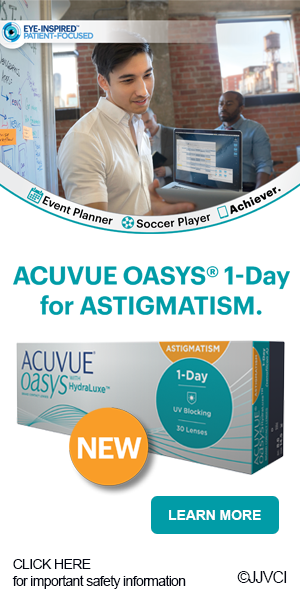I have spoken in the past about my grandfather and his practice that started in 1950. The optometry that my grandfather practiced is barely the same profession that I practice. The way that he generated money and the way that I generate it are substantially different. He exchanged credit around town with his patients or took cash (or other goods) for his exams. He helped patients select their glasses and sent them off to the lab himself. My grandpa knew what his profit margins were on his exam and a pair of glasses; but, I imagine that more than 90% of practitioners today couldn’t say what the profit margin is on a pair of glasses once managed vision care sends an explanation of benefits with the chargebacks on it. Even so, many physicians are holding true to the managed care reimbursement of glasses as the primary moneymaker in their practices. I propose that today’s contact lens practice is markedly more profitable.
How It Works
For standard contact lens fittings, practitioners usually set the fee and, after a discount, they get paid most of the contact lens service fee. When it comes to the lenses, the practitioners’ buying groups or distributors have shared the costs on the lenses; so, when patients buy those lenses, practitioners gets paid the list price on those lenses. Simply put, profit = retail price – cost of goods.
But many practitioners have things backward; they are not valuing or charging for the service that they provide while at the same time overvaluing and overcharging for lenses that patients can get on the internet or at big box stores for a cheaper price. If practitioners can reduce their per-box retail price on contact lenses and transfer that price break to their services, they will gain more retail sales on lenses.
In many cases, the retail price difference is a very small amount per box and will not increase the contact lens service charge substantially. However, in most cases, this will raise profits noticeably and should put the contact lens profits well above the managed care glasses sale.
If practitioners find that their managed care glasses profits are still averaging higher compared to their contact lens profits (fitting and lenses), then that is a symptom of a few problems.
First, practitioners may not be charging enough for the services that they provide. I have found that many physicians undervalue their service and, as such, charge very little for their expertise and knowledge.
Consider an end-of-year review and raise contact lens fees a little. Practitioners should train their team on why the fee is increasing and help them explain it to patients. Over the next few years, they should continue to raise the fee a little each year until they are getting paid what they are worth.
Second, practitioners may not be capturing contact lens sales. Generally, this is because contact lens product fees are not competitive or are perceived to be higher. Therefore, patients are leaving and buying lenses elsewhere. Practitioners can do a year-end review with their distributor and adjust contact lens prices so that patients won’t imagine leaving their office to go elsewhere.
It Just Makes Sense
Practitioners who fit contact lenses should be begging patients to go into them because of how great they are. They provide freedom from glasses, comfort, and great vision. Contact lenses also help to support a practice and its profit. CLS
READ MORE: https://www.clspectrum.com/issues/2019/december-2019/contact-lens-practice-pearls





